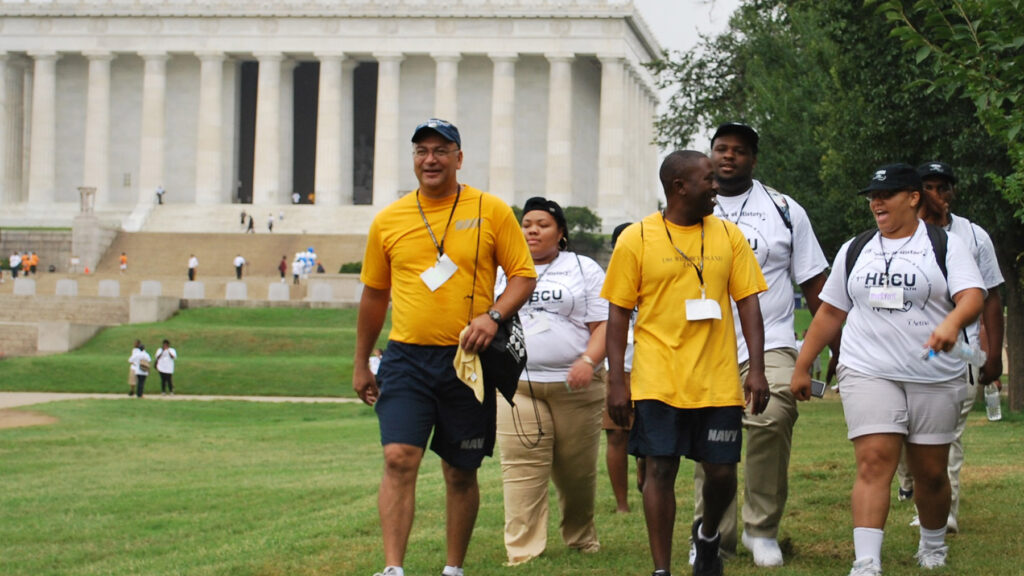Preserving Educational Opportunity in an Era of Fiscal Scrutiny: The Stakes for HBCUs and Their Students
Discussions about federal priorities and fiscal decisions can reshape higher education access and affordability for generations

Ongoing discussions about federal priorities and fiscal decisions have the potential to significantly reshape higher education access and affordability for generations to come. As we examine the potential consequences of various fiscal approaches like the current budget reconciliation, it becomes imperative to understand how potential budget reductions — particularly those that could affect Pell Grants, SNAP benefits, Medicaid, and student loan repayment plans — might disproportionately impact Historically Black Colleges and Universities (HBCUs) and the students they so effectively serve.
We often hear discussions around federal budgets that outline shifts in spending priorities, sometimes referred to colloquially as “skinny budgets.” While a “skinny budget” typically refers to a preliminary proposal outlining broad spending priorities without full details, the concern arises when such frameworks suggest substantial reductions in programs crucial for higher education access. These discussions occur against a backdrop where the average published costs for tuition, fees, room, and board at public four-year institutions have risen by approximately 15% over the past decade, even after adjusting for inflation, while median household incomes have struggled to keep pace.
HBCUs represent just 3% of four-year colleges in the United States, yet their impact is monumental. HBCUs produce an estimated 80% of Black judges, 50% of Black doctors, and 50% of Black lawyers. Despite this outsized contribution to professional diversity and economic mobility, HBCUs have historically contended with significant resource disparities compared to predominantly white institutions (PWIs). For instance, a The Century Foundation highlighted that public HBCU endowments are, on average, 30% smaller per student than those at comparable PWIs, and state underfunding of land-grant HBCUs has been documented in the billions over decades. These underlying inequities make HBCUs and their students particularly vulnerable to shifts in federal support.
Should significant reductions in Pell Grant funding ever be enacted — for example, a hypothetical 15% cut — it could pose a severe threat to HBCU enrollment and student success.
By the numbers:
Consider Maya’s story: Maya, a first-generation college student from Atlanta, receives the maximum Pell Grant to attend an HBCU in Alabama. If her grant were cut by $1,100, her family would face an immense challenge to cover this gap — equivalent to nearly three months of grocery costs for many working-class families. For Maya, this could mean increasing her work hours from 15 to 25 hours weekly, inevitably reducing time for studies and potentially delaying her graduation.
Potential cuts to essential support programs like SNAP benefits and Medicaid could also create significant hardships for college students. Discussions of reducing funding for these programs by tens or even hundreds of billions over a decade are not uncommon in various fiscal proposals.
Research from the Hope Center for College, Community, and Justice reveals the stark realities:
Consider Jamal’s situation: Jamal, a junior studying computer science at an HBCU in Louisiana, relies on SNAP benefits. A significant reduction in these benefits, say $75 monthly, could impact his ability to afford adequate nutrition. Simultaneously, were changes to Medicaid eligibility to jeopardize his access to medication for a chronic condition, the combined effect could force Jamal into impossible choices between food, medicine, and his education.
Proposals that seek to consolidate or eliminate existing income-driven repayment (IDR) plans, potentially replacing them with less generous options, could disproportionately affect HBCU graduates.
Consider the future of Aisha: After graduating with $40,000 in debt from an HBCU, Aisha plans to become a public school teacher. Current IDR plans might offer her manageable monthly payments (e.g., around $200). If these plans were replaced by a less accommodating system, her payments could substantially increase (e.g., to $380 or more), severely impacting her financial stability and potentially discouraging her from pursuing a career in public service.
The consequences of underfunding educational opportunity extend far beyond campus boundaries. HBCUs generate approximately $14.8 billion in economic impact annually and support over 134,000 jobs. Constraining these institutions threatens not only student outcomes but also regional economic vitality.
When students like Maya, Jamal, and Aisha struggle to afford or complete their education, their communities lose out on their full potential. While precise figures vary by study, the consensus is clear: college graduates, including those from HBCUs, contribute significantly more in lifetime earnings and civic engagement than individuals with only a high school diploma.
Rather than contemplating measures that could diminish access and affordability, our elected officials should strive to:
Decisions about federal spending are choices about our nation’s future and who will have the opportunity to contribute fully to it. Measures that could disproportionately harm HBCU students risk undermining institutions that have been unparalleled engines of advancement for Black Americans.
As we engage in debates about national priorities, let us remember that education remains our most powerful catalyst for opportunity and progress. Investing in HBCUs and their students is an investment in a more equitable, innovative, and prosperous future for all Americans.
Photo credit: Oscar Sosa